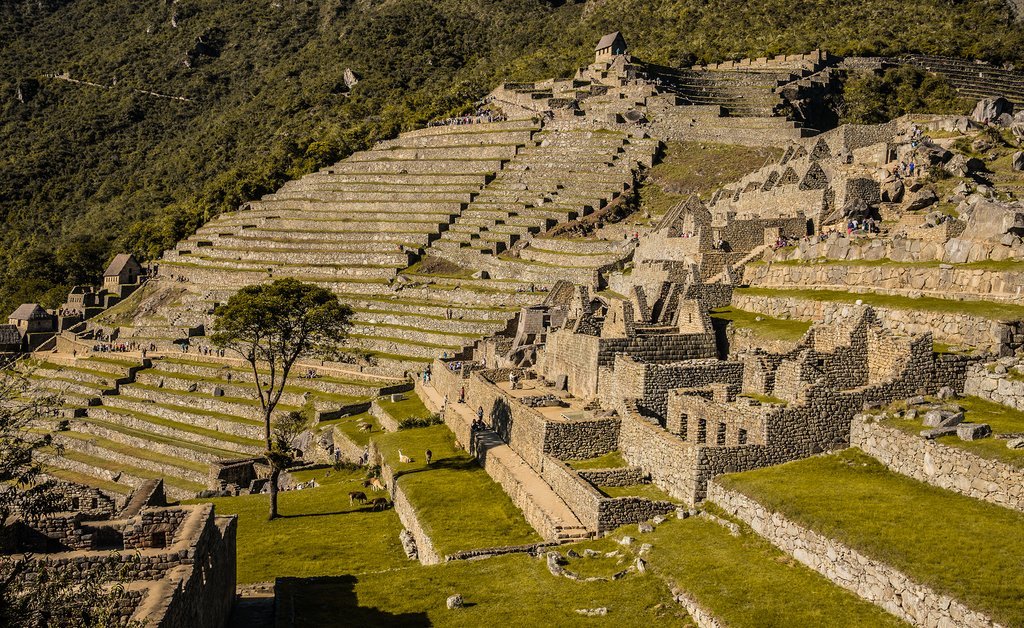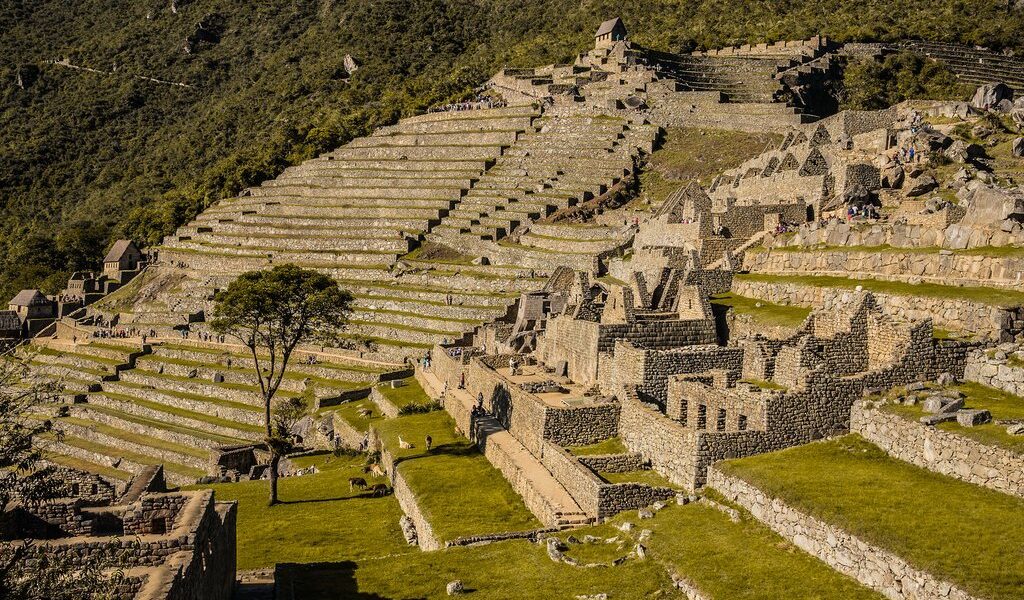
The Inca Trail reopens, the wet weather starts to subside and, should Easter fall this month, Semana Santa brings in the crowds to Machu Picchu at levels not seen since the end of last season’s shoulder period. Read on for more advice on traveling to Peru’s most beloved attraction in March.
## A Comprehensive Guide to Visiting Machu Picchu and the Sacred Valley in March
**Weather in March**
March in the Sacred Valley presents a unique blend of conditions, as it firmly remains within the rainy season. Following February, March is typically one of the wettest months in this breathtaking region surrounding Machu Picchu. However, as the month progresses, the promise of drier days becomes increasingly apparent. You’ll find that sunshine peeks through the clouds more frequently, offering glimpses of the stunning landscapes.
Temperatures in and around Machu Picchu during March fluctuate, with daytime highs reaching around 65° F (18° C) and nighttime lows dipping to approximately 42° F (6° C). This temperature range necessitates careful packing to ensure comfort throughout your visit. While the sun makes more frequent appearances, it’s important to note that the iconic ruins are still often shrouded in mist and clouds, creating an ethereal and sometimes mystical atmosphere.
The key to a comfortable and enjoyable trip to Machu Picchu in March is to be prepared for a variety of weather conditions. Pack clothing suitable for hot, wet, and cold weather, as you might experience all three within a single day. Layers are essential, allowing you to adapt to the changing temperatures and precipitation levels.
**Crowds and Costs in March**
Compared to the quieter period of February, March witnesses a noticeable surge in tourist numbers to Machu Picchu and its surrounding areas. This increase in visitors brings the crowds back to levels reminiscent of the previous October, marking a significant shift in the atmosphere. Several factors contribute to this rise in tourism. Firstly, the gradual improvement in the weather, with the dry season on the horizon, entices more travelers to explore the region. Secondly, the arrival of Semana Santa, or Holy Week, one of Peru’s most significant celebrations, plays a crucial role.
Semana Santa, a week-long festival observed either in March or April leading up to Easter, represents a major holiday period for many Peruvians and South Americans. This influx of domestic and regional tourists contributes to the increased crowds and impacts the cost of travel. While the early part of March can still offer opportunities to find deals on hotels and tours, the latter part of the month, especially if it coincides with Semana Santa, typically sees prices escalate to levels comparable to or even exceeding those of the peak high season.
Therefore, careful planning and booking accommodations and tours well in advance are highly recommended, particularly if your visit falls during Semana Santa. Being mindful of these factors will help you manage your budget and secure your preferred travel arrangements.
**Where to Go in March**
The renowned Inca Trail becomes accessible again to visitors of Machu Picchu in March after its annual closure for the month of February, which allows for essential maintenance and restoration work. However, it is important to remember that, similar to other trails in the region, conditions underfoot remain wet and muddy. The risk of landslides, caused by earth destabilized by the heavy rains of the wet season, is still present, requiring hikers to exercise caution.
If your visit to the Sacred Valley during March coincides with Semana Santa, it is highly recommended to dedicate time to exploring the various towns and villages in the area. Immersing yourself in the vibrant pageantry and religious celebrations that characterize this important festival will be a truly enriching and memorable experience. Witnessing the local traditions and cultural displays will provide a deeper understanding of Peruvian culture.
**What to Do in March**
While March is not considered the optimal season for hiking, the reopening of the Inca Trail does present an opportunity for avid trekkers. However, caution should be exercised on steeper trails, such as the path leading up to Wayna Picchu, as they can be extremely slippery due to the wet conditions.
It’s important to remember that despite its high-altitude setting, Machu Picchu is enveloped by lush jungle, primarily cloud forest. This unique environment offers opportunities for diverse activities that are particularly enjoyable during the wetter season. Consider exploring the Inca Jungle Trek, a four-day adventure tour that combines cycling, zip-lining, and rafting, culminating in a visit to Machu Picchu.
Due to significant rainfall, rivers are at high levels in March, creating ideal conditions for rafting enthusiasts. Exploring the jungle waterways at this time of year also offers closer proximity to canopy wildlife, such as monkeys. Many rivers around Machu Picchu boast Class IV rapids during March, providing an exhilarating experience for thrill-seekers. Furthermore, wildlife enthusiasts will find great pleasure in observing the abundant plant life and blossoming flowers in the region, which reach their peak vibrancy after the rainy season.
For travelers planning to travel by train from Cusco to Machu Picchu (arriving at Aguas Calientes train station) in March, it’s important to note that services from Cusco’s Poroy train station are temporarily suspended. Instead, you will be transported by bus for the Cusco-Ollantaytambo section of the journey, before continuing by train to Aguas Calientes from Ollantaytambo.
**March Events**
The main event in the Sacred Valley during March, especially if Easter falls within the month or at the beginning of April, is Semana Santa, a week-long celebration filled with religious observances and cultural festivities. Cusco’s Semana Santa celebrations are particularly noteworthy, including the festival of Señor de Los Temblores on the Monday of Holy Week. This festival commemorates the devastating earthquake of 1650 that struck Cusco, with an effigy of the ‘Lord of the Earthquakes’ carried in procession through the city. Experiencing these unique and culturally significant events will add a rich layer to your visit to the Sacred Valley.
(Word count: 851)
B-2061

